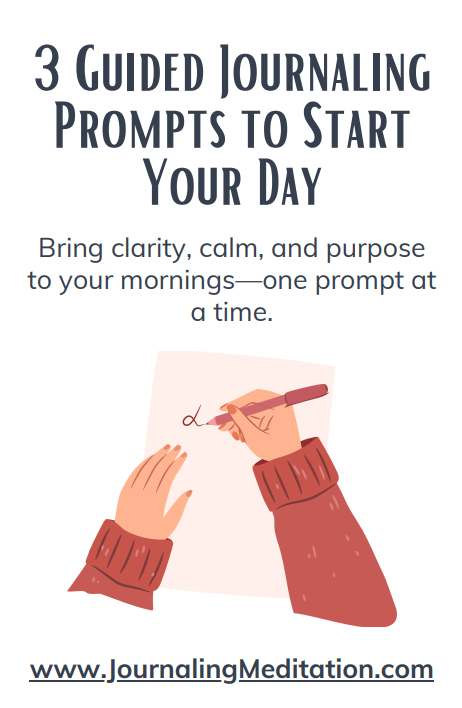
Breathing is not just a life sustaining action; it’s a connection with the present and the most accessible pathway to inner tranquility. Within the practice of meditation, focusing on one’s breath can be a transformative experience. In this post, we’ll take a look at breathing for meditation and look deep into the essence of breath-focused meditation, uncovering both its scientific and experienced benefits. If you’ve ever wondered why breathing is so central to meditation and how you can enhance your practice, you’re in the right place.
(This post contains affiliate links. If you make a purchase through these links, I may earn a commission at no extra cost to you.)
The Science Behind Breathing and Meditation
Understanding Our Breath
Breathing is the most natural process, yet it holds complex power over our mental and physical well-being. Each breath in brings needed oxygen into the body, fueling our cells, while each exhale releases carbon dioxide, a waste product. This process is not only necessary; but can influence our stress levels, emotional state, and even our clarity of thought.
The Role of Breathing in Meditation
Why does such a natural, automatic action like breathing take center stage in meditation? Controlled breathing during meditation activates the parasympathetic nervous system, reducing stress and inducing a state of calm. Studies have shown that regular practice can improve concentration, reduce anxiety, and enhance one’s overall quality of life. Neuroscience News
Why Focus on Breath in Meditation?
Gateway to Present Moment Awareness
Breath is a reliable, unwavering point of focus that helps ground us in the present moment. This attention on the “now” is essential for mindfulness, allowing us to step away from our past and focus on now, our breath.
Regulating the Body’s Response
Through the simple act of breathing, we have the power to regulate our body’s stress response. Controlled breathing techniques can significantly lower the body’s cortisol levels. You may remember this as “stop and count to ten.”
Enhancing Concentration and Mindfulness
Distractions are such a common issue in meditation. Being aware of your breath helps reign in the mind, reducing distractions by giving you a focal point, therefore enhancing our capacity for concentration and mindfulness.
How to Practice Breathing for Meditation
Preparing Your Environment
Creating a tranquil environment is the first step. Choose a quiet, comfortable spot where you can sit undisturbed. A proper sitting posture, with a straight back and relaxed shoulders, facilitates easier breathing. Laying down is also common, but you may be more prone to falling asleep.
Basic Breathing Techniques for Beginners
For those new to meditation, starting with a basic techniques such as counting breaths can be highly beneficial. This method can help cultivate awareness and control over one’s breathing patterns.
Advanced Techniques for Experienced Meditators
Those more experienced might want to explore advanced techniques like alternate nostril breathing or Kapalabhati. These practices can further refine breath control and enhance the meditative experience.
Incorporating Mantras and Visualization
Adding mantras or visualization to breathing practices can deepen the meditation experience. Visualizing the breath moving through the body or repeating a calming mantra can enhance focus and intention.
Common Challenges and How to Overcome Them
Finding the Right Rhythm
It’s really helpful to find a breathing rhythm that feels natural and sustainable. Experiment with different techniques and pay attention to what feels most comfortable for your body.
Dealing with Distractions
Distractions are inevitable, but they don’t have to derail your practice. When you notice your mind wandering, gently redirect your focus back to your breath without judgment. Your building strength. So resistance is the purpose. The more you correct from your distractions, the stronger you get.
Progressing in Your Practice
Recognize and celebrate your progress, no matter how small. Gradually incorporating more advanced techniques can help keep your practice engaging and challenging. But it can also be discouraging if you try too much too soon. Push yourself, but be reasonable.

Breathing Techniques for Specific Goals
For Relaxation and Stress Relief
Certain breathing techniques, like the 4-7-8 method, are particularly effective for inducing relaxation and mitigating stress. This technique involves inhaling for 4 seconds, holding the breath for 7 seconds, and exhaling for 8 seconds.
For Increased Energy and Focus
Breathing methods that involve faster, more energized breaths, such as Kapalabhati, can help invigorate the mind and increase focus.
Your Breath Is The Key
Breathing for meditation is a powerful tool that can transform your mental, emotional, and physical health. By understanding the science behind it and practicing regularly, you can unlock the full potential of this simple yet profound technique. Whether you’re a beginner or an experienced meditator, focusing on your breath opens the door to a deeper, more fulfilling meditation practice.
We’d love to hear from you in the comments! Share your experiences with breathing for meditation, your favorite techniques, or any tips you’ve found helpful in your journey.
FAQ Section
Breathing is a pillar of meditation, offering a simple yet effective way to help with mindfulness and reduce stress. However, with all the different techniques and methods available, it’s common to have questions about how to use breathing in your meditation practice properly. Below, I’ve put together answers to some frequently asked questions to help guide in doing so.
How should I breathe when I meditate?
When meditating, your breathing should be natural and comfortable, without forcing it to be too deep or too slow. Start by simply observing your breath as it is, then gradually allow it to deepen naturally. Diaphragmatic breathing, where you breathe deeply into your belly rather than shallowly into your chest, can help reduce tension and promote relaxation.
What does the 4 7 8 breathing technique do?
The 4 7 8 breathing technique is a powerful method for reducing anxiety and promoting relaxation. By inhaling for 4 seconds, holding the breath for 7 seconds, and exhaling for 8 seconds, this technique helps regulate the nervous system. It’s particularly useful for calming the mind before sleep or during moments of heightened stress.
What are the 4 stages of breathing meditation?
The four stages of breathing meditation include:
- Observation: Simply observing the natural rhythm of your breath without trying to change it.
- Controlled Breathing: Intentionally deepening and slowing down the breath to cultivate focus and relaxation.
- Retention: Holding the breath at the top of the inhalation or bottom of the exhalation to enhance control and concentration.
- Using Mantras or Visualization: Incorporating mental images or phrases to deepen the meditative state and maintain focus on the breath.
What is the 3 3 3 breathing method?
The 3 3 3 breathing method is a simple technique designed to help calm the mind and reduce stress quickly. It involves taking a deep breath in for 3 seconds, holding it for 3 seconds, and then exhaling for 3 seconds. This method can be particularly effective in moments of acute stress, as it helps to reset the body’s stress response.
Breathing techniques offer a versatile tool to enhance meditation and manage stress. Whether you’re a seasoned meditator or just beginning to explore mindfulness practices, understanding and incorporating these breathing methods can significantly improve your meditation experience.
Now, we’d love to hear from you! Have you tried or do you practice any of these breathing techniques during your meditation? Share your experiences or any other questions you might have in the comments below. Your insights not only help improve community’s knowledge but also inspire fellow readers on their meditation journey.






